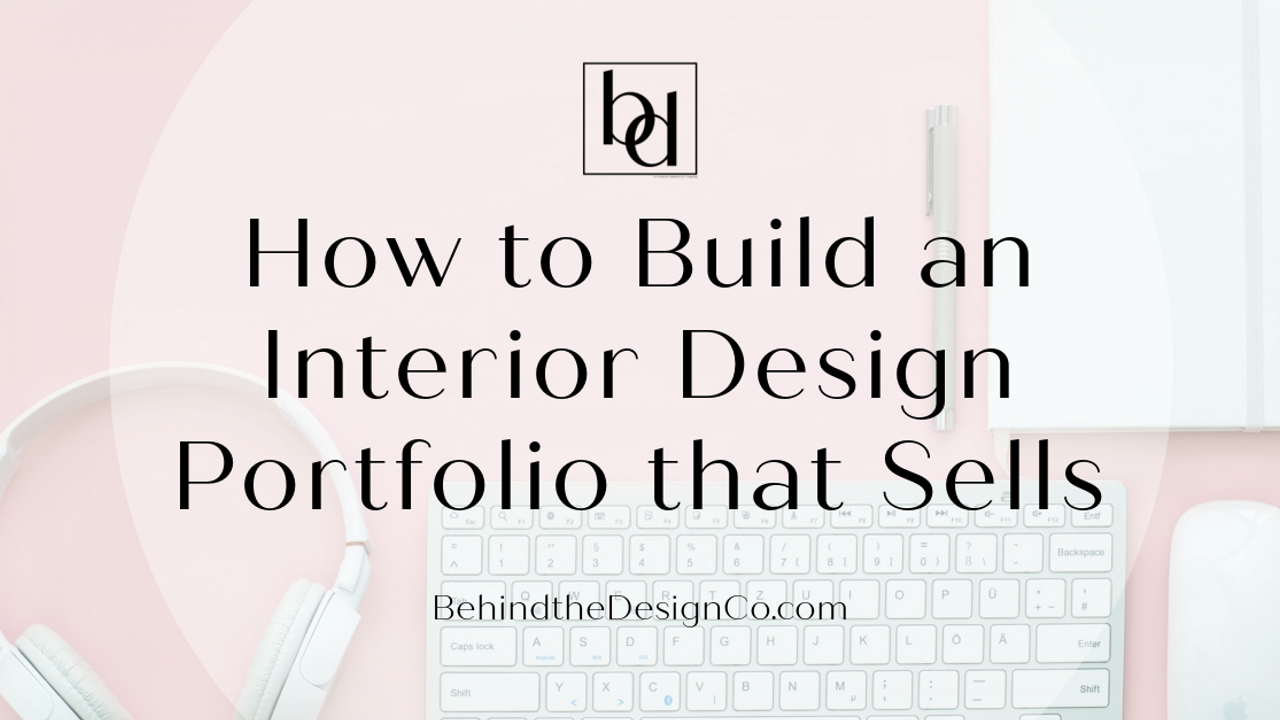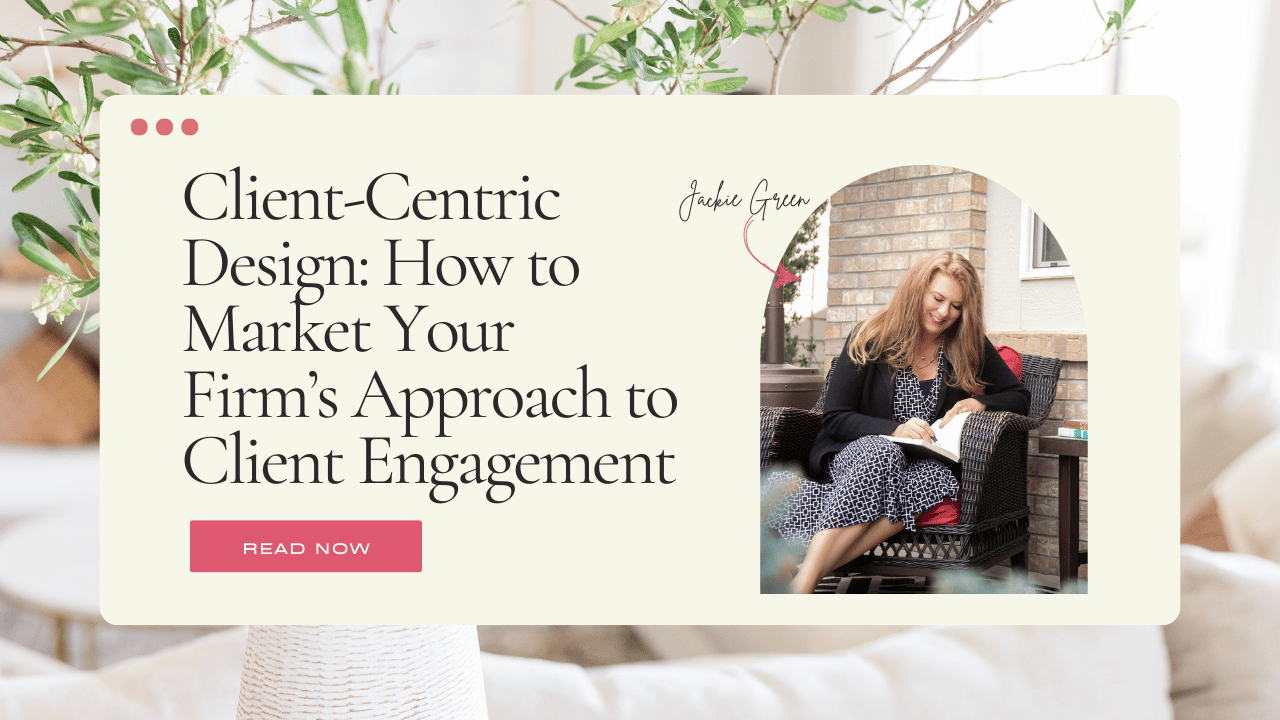How to Build an Interior Design Portfolio that Sells
Jul 23, 2021
Your portfolio is your marketing brochure. It should scream your personal brand.
Building a portfolio that sells your interior design skills may feel overwhelming, especially if you are a student without professional experience. You may be asking yourself what should be included, how it should be laid out, and what hiring managers will be looking for. Lately, I have received several questions on how to build an interior design portfolio. We are giving you a few helpful hints to get you started.
Purpose of the Interior Design Portfolio
Building a portfolio is vital to finding a job or freelance work in the interior design industry. Honestly, you must have one as it showcases your capabilities. Your interior design portfolio is an extension of your personal brand. It is a marketing tool that will either land you a job or new clients. It tells a story of who you are as a designer and what talent and skills you bring to a firm. It needs to sell you as a potential employee.
Related Article: "Interior Design Students: Here is your Interview Preparation Guide"
It also allows you to influence the questions being asked during an interview. When you are sitting in an interview, the interviewer will likely flip through your portfolio and ask you specific questions about your different projects. The projects in your portfolio are a cheat sheet for you. You know them well, and you know what skills you used to complete the projects. Your portfolio needs to look professional and well-thought-out.
Understanding the Needs of an Interior Design Hiring Manager
Hiring firms are not just looking for someone who can put colors or finishes together. They want someone who can listen to the client, think through the client’s problems, and come up with realistic solutions that will look beautiful and be functional. In your portfolio, you will want to show how you selected materials and finishes for different projects, but more importantly, how did you solve the client’s problem.
Building your Interior Design Portfolio
Ideally, you want a portfolio with 10 pages. Some people recommend 8 ½” by 11”; I prefer a little larger because it gives you more real estate to showcase your strengths. You will want to include a cover page, a table of contents/introduction page, and the final page is your resume. That leaves you with seven pages. A project can take 1 to 2 pages. Therefore, you will need between 4 and 7 projects to showcase.
The cover page will be simple and well-designed. It should have visual interest that speaks to who you are as a designer. You want to include an image from a project you created or an image that summarizes your personal brand. Be sure to include your name/logo on this page. How you design this page will help you build a template for the remainder of the pages.
Besides the cover page, you should have a consistent template on each page that includes your name/logo/contact information. This template will represent your personal brand. You will want to stay consistent with the fonts, colors, and graphics on every page. The headline on each page should use the same font, size, color, and treatment. If you include a border around the page, it should be the same color, thickness, and location on each page. Your logo should be located at the same point on each page.
The second page of your portfolio will be the table of contents and a personal introduction. The contents will include the project name/headline and the page number(s). This is a great place to add your long branding statement. I have several articles on our blog that talks about branding. Your personal branding statement describes who you are and why someone should hire you. You will want to create short, medium, and long statements. The short statement is specific when you first meet someone. The medium is when someone asks about your work. The third is an expanded version which is ideal for website bios, LinkedIn Bio, and your portfolio.
Check Out: “Everything an Interior Designer Needs to Build a Personal Brand”
Pages three through nine will display your projects. Don’t stress if you only have school projects. Yes, it is better if you have professional projects from an internship or a design job. As you gather more experience, you will be able to replace school projects with professional projects. It will just take time.
On each page, you will give the page a headline, ideally the project name. I like using a sub-headline that summarizes the experience, such as Kitchen Design, Revit Modeling, Retail Design, SketchUp 3D Rendering, or Residential Design. Remember, the headline and sub-headline should be consistent in the font used, its size, and treatment, but it doesn’t say the same thing on each page.
Helpful hint: Business Cards
If you are a student or emerging professional, create business cards that include your logo, contact information, and brief skillset summary. You can have the cards printed inexpensively at online print shops, like Vista Print. Hand these cards out like candy at every event you go to and to every person you meet. Often you will meet different people during the interview – give your card to each one and ask for their card. You want to grab their business card so you can send a personal thank you note to each person that interviewed you. Guess what, throw in your business card inside the thank you cards. Your contact information is right there.
On the project pages, you will want to add a description of the project that includes the client and their problem. You want to show your design aesthetics, of course, but you also want to identify the actual problem that needed solving.
The client couldn’t cook in their kitchen because it wasn’t functional, or the client wanted a new entertaining area that would include the extended family. Design is much more than just making a space beautiful. Beauty comes from a well-designed space, but the design needs to solve the customer’s problem.
In this description, explain your reasoning for the design decisions. If space planning a kitchen includes additional storage, that is important. Maybe you were able to add a wine refrigerator along with wine bottle storage that is great if your client is a wine connoisseur.
You may be asking which projects you should include in the limited space. Pick projects that you are proud of and that emphasize your career objects. For instance, if you suck at CAD and hope to never work in CAD again, then don’t make CAD an emphasis in your portfolio. Take it from someone who would rather poke her eye out than work in CAD. Do you have the skill? Yes, but that doesn’t mean you want to emphasize it.
Related Article: "A Step-by-Step Guide for Interior Design Students to Finding an Internship (or Job) Using LinkedIn"
Read through job descriptions and see what entry-level jobs are requesting. The key areas where they need help are space planning, furniture layout, furniture specification, interior finish selection, and presentation to the client. You may all see FF&E documentation and procurement – drawings and documentation of furniture and space planning – also need computer skills such as Revit, AutoCAD, SketchUp, Adobe Suite, and Bluebeam. Build your portfolio to showcases your strengths and how you can meet the interior design studio’s needs.
Through the images you use and the description, you are essentially walking someone through the project. Please do not slap on a bunch of pictures. Think of these pages as design boards. You do not need to include every single rendering or material picture. Pick a few that will highlight the project and tells a story. Use your design skills to create something that looks great. Remember your design elements and principles. Apply those same elements and principles to your portfolio.
The last page of your portfolio will be your resume and professional summary. Also, include your contact information. This page should have the same template you used on pages two to nine.
Don’t Forget these Helpful Tips
Many designers have other skills besides design. About half of my students are changing careers either because they are dissatisfied with their current career or took time off to raise a family. Your story is unique to you, and your transferable skills are a part of that story. Play these up in your portfolio and branding statements.
For instance, many designers are struggling to maximize social media. If you are good at curating on social media, this may be an area that you can successfully help the firm.
Your writing and research skills may also be a significant benefit to a firm. If you have a photography habit, that is awesome. Showcase a few of your pictures on one of the portfolio pages and on LinkedIn. Firms can’t always afford to hire professional photographers on every project. Having that skill set in-house will help when budgets are tight.
Before you share your portfolio, have someone close to you read through it. Check for grammar and spelling errors. Notice any oddities that you may have glanced over as you were laying out the pages.
Your portfolio needs to look professional. If you do not have access to Adobe In-Design or Illustrator, don’t fret. You can use software such as Canva or PicMonkey, which are inexpensive. Save your portfolio in a PDF, then share it with the design world on LinkedIn. Print one or two copies of the portfolio that you can take to each job interview.
Electronic Versus Print Interior Design Portfolios
I am going to tell you a secret. Not all interior designers are tech-savvy. An electronic version of your resume is excellent. If you want to use an inexpensive website provider to create an online version of your portfolio, you should absolutely do just that. However, a print version should also be created and shared. You do not want to alienate someone who may not be tech-savvy. You also don’t want the hiring manager to work harder than necessary to get a good feel for who you are and what you have to offer.
Join our Weekly Email for the Latest Articles
At GAI's Behind the Design, we are committed to helping interior designers grow. Through our various software training options, educational articles covering everything from leadership to marketing, and soon Continuing educational courses, we are committed to helping interior designers grow their careers and businesses. Join our newsletter to get the latest education and training updates. We promise not to bombard your email.
Sign Up for Our Monthly Newsletter
Get helpful career, business, and design tips right in your inbox each month.
At Behind the Design, we are committed to building a stronger design community by reimagining education, training, and support for interior designers. Through our various software training options, educational articles covering everything from leadership to marketing, and soon Continuing educational courses, we are committed to helping you. Join our newsletter to get the latest education and training updates.









